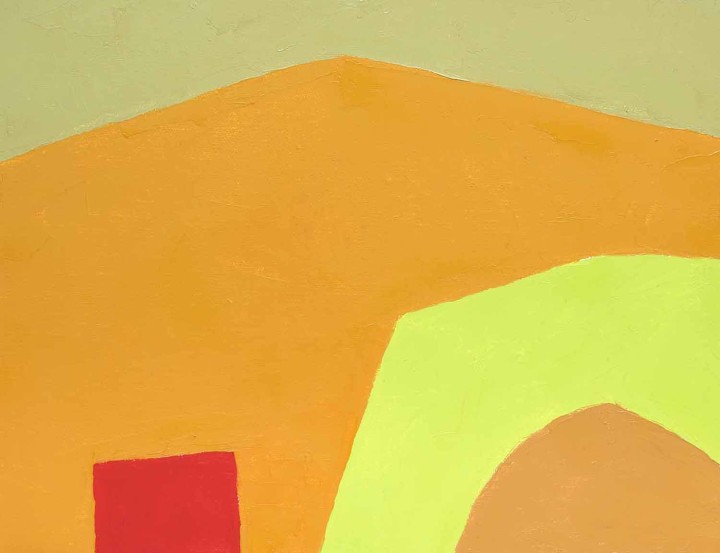The first solo exhibition in France of the works of Etel Adnan, organized by the Institut du Monde Arabe, whose home is a Parisian landmark designed by Jean Nouvel, brings together a selection of paintings, drawings, films, poetry, and tapestries by the ninety-one-year-old Paris-based artist.
Born in Beirut in 1925 to a Greek mother and Syrian father, and known primarily for her small, abstract paintings in bold colors, Adnan has also produced textile works inspired by Persian rugs, as well as a series of leporello sketchbooks that combine drawing and watercolor with writing and poetry. One of these, The Lost Mother and Daughter (1970), incorporates the words of Iraqi poet Badr Shakir al-Sayyab, whose revolutionary verses calligraphed in black ink contrast with a luminous blue-and-yellow background.
The exhibition is divided according to four themes. The first: “Texts and Poetry,” is based on her infamous 1980 poem “The Arab Apocalypse,” written during the Lebanese Civil War, and emphasizes the importance of writing to her practice; “Mountains” details the recurrent motif of Mount Tamalpais in Marin County, California, across her oeuvre; while “Colors and Sounds” focuses on her production of tapestries. Her most poignant chapter, titled “Exile,” is organized around her frequent travels between Europe, the US and the Middle East. This section is rich in oil-painted landscapes, pastels and drawings but also films, such as the Super 8 movie Motion (1980–90), which portrays a shadowy, dreamlike New York as seen through the window of a friend’s apartment.
Throughout this intimate retrospective, Adnan’s voice, both feminist and pacifist, reveals itself through her interwoven influences, languages and techniques. She observes her itinerancy, from Smyrna to Beirut, and from Sausalito to Paris, with a generous and engaged eye — an inspiring empathy for our inward-turning age.

